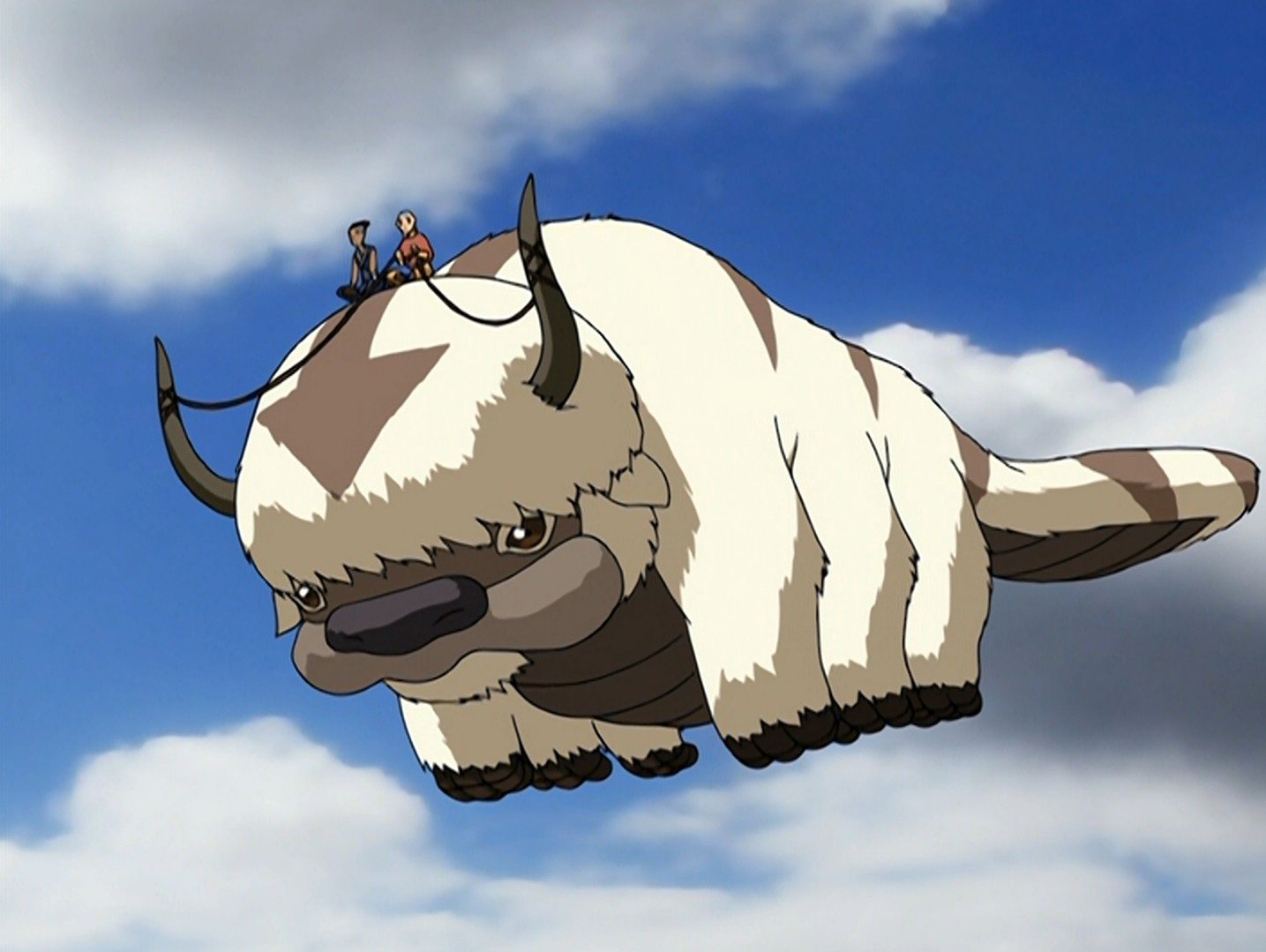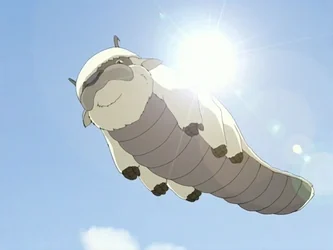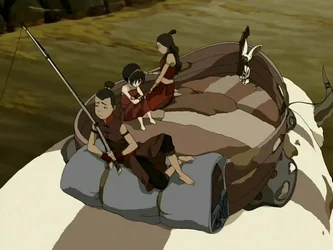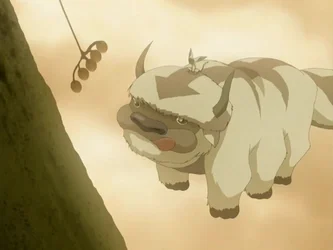
In ‘Avatar: The Last Airbender’, Appa is Aang’s sky bison and a vital part of Team Avatar’s journey, carrying them across vast distances. He’s deeply woven into the show’s world and history, representing a link to the lost Air Nomad culture. More than just transportation, Appa provides stability during challenging times – through wars, harsh deserts, and icy blizzards – and his actions actually influence the plot.
Appa isn’t just a cute companion – he’s deeply woven into the world of ‘Avatar: The Last Airbender’ and ‘The Legend of Korra’. From the mechanics of his airbending to the unique bond Air Nomads share with sky bison, and even an entire episode dedicated to his story, Appa is full of meaningful details. Here are ten reasons why he’s so important to the series.
Sky Bison Origins and Role

Appa is a sky bison, a large, flying mammal originally found at the temples of the Air Nomads. These creatures are naturally gifted airbenders, and their bodies – with six legs, huge lungs, and a strong, bendable tail – allow them to fly for long periods and create powerful gusts of wind. Air Nomad monks raised baby bison at their temples, teaching young airbenders how to care for them by grooming, feeding, and earning their trust. This created strong, lasting relationships between each rider and their bison.
Air Nomads didn’t simply acquire sky bison – young airbenders formed a deep connection with them. Aang and Appa became partners as a child at the Southern Air Temple, and this partnership involved learning to work together. They trained to understand each other’s commands, fly with a saddle, and skillfully take off and land in challenging places like temple towers and cliffs.
How Appa Flies (Airbending Mechanics)

Let me tell you, watching Appa fly is unlike anything else. Forget wings – this giant sky bison uses airbending! He basically *becomes* the air, channeling it through his body and that massive tail to lift off, move forward, and steer. It’s incredible how his tail works – it’s like a rudder, sweeping from side to side for turns, little flicks to go up or down, and even powerful slams to blast away obstacles or fight strong winds. It’s not just flying; it’s a beautiful, dynamic display of control.
Appa flies using a unique bending ability, allowing him to carry very heavy loads without being limited by typical aerodynamic constraints. He can transport many passengers, a full saddle, and plenty of cargo, and he’s able to adjust his speed and altitude to save energy during long journeys or quickly navigate through bad weather when necessary.
The Aang–Appa Lifebond

I’ve always been fascinated by the connection between Aang and Appa. It’s so much more than just a boy and his flying bison! They actually have a really deep, established bond that goes way back, thanks to how airbenders are trained. From a young age, airbenders are paired with sky bison and learn to care for them, training together every day. You can really *see* how close they are – they move as one, Appa instantly understands even the smallest signals from Aang, and he’s fiercely protective, especially when things get dangerous. It’s amazing to watch how seamlessly they work together, whether it’s a quick escape or a rough landing – they truly rely on each other.
Appa isn’t just a companion; he’s essential for survival. If Aang is hurt or lost, Appa immediately searches for him, recognizes signals, and guides them to safety – like back to the Southern Water Tribe’s ship or safe places in the Earth Kingdom. Their established routines, from mealtimes to flight paths, make long journeys safer and provide a sense of stability even when things don’t go as planned.
Commands, Signals, and the Bison Whistle

Appa understands voice commands, and is best known for responding to “yip” to begin flying. Beyond that, Appa can follow directions and landing instructions, letting it react fast in tricky situations – such as escaping from a rooftop under attack or landing safely on ice without breaking it.
Aang has a special whistle that sky bison can hear from far away. It helps him find and call them, even when he can’t see them – like during a sandstorm, in a busy city, or deep in the woods. By using both his voice and the whistle, Team Avatar can easily give instructions whether they’re close together or far apart.
Appa’s Strength, Endurance, and Weather Handling

Appa is physically strong and well-suited for harsh environments. His dense fur keeps him warm in cold weather, and his large size and powerful lungs allow him to fly at high altitudes where the air is thin. He’s also a capable swimmer, able to propel himself through water with his tail and legs, and use his airbending to move quickly or surface when underwater.
When facing tough weather like heavy rain, blizzards, or strong desert winds, Appa adapts by flying lower, sheltering behind land features, or making quick, short flights between safe spots. He can travel for long days and then bounces back with rest, water, and being groomed – all of which the team plans for to ensure he stays healthy and ready to go.
The Saddle: Design, Storage, and Safety

The saddle Team Avatar uses on Appa isn’t just for looks – it’s designed to be practical and keep everyone safe. It’s firmly attached to Appa’s shoulders and back to evenly distribute weight. The high sides and handles help keep passengers secure during quick turns or bumpy rides. Plus, the platform in the middle gives the team space to move around, look out for danger, and work together while flying.
Built-in storage allows the team to carry essential supplies like tents, cooking equipment, water, first aid, and extra clothes without making the load unstable. The saddle also functions as a portable campsite, letting them set up a tent right on Appa when landing on uneven ground, which saves time and keeps them safer from dangers on the ground.
Appa’s Navigation and Tracking Skills

Appa has an impressive memory for places, consistently finding his way back to familiar spots like temples, villages, and meeting points, even after being away for a long time. He uses recognizable landmarks and natural features – rivers, coasts, and mountains – to navigate, especially when maps aren’t detailed or accurate. This ability is crucial for finding his way in unfamiliar or changing environments.
As a movie lover, I always appreciate when filmmakers build in layers of detail, and that’s what I see in this character. Beyond just looking at the stars to find his way, Appa also relies on his incredible senses – smell and hearing. He can recognize people or places just by their scent, and he’s amazingly tuned into sounds, like a bison’s call or any unusual noise in his surroundings. It’s smart because it gives him backup plans when the obvious methods, like using the stars or following tracks, are impossible due to clouds or a sandstorm. It feels very grounded and realistic, which I love.
Cultural Significance in Air Nomad Lore

Sky bison are central to the traditions of the Air Nomads. The Nomads actually developed their airbending techniques by watching how bison move – they copied the animals’ natural motions, like tail and body movements, into their own fighting styles and defensive poses. Caring for bison wasn’t just a task for the monks, it was a spiritual practice that helped them connect with nature and improve their bending skills.
This connection to sky bison continued throughout history. In ‘The Legend of Korra,’ these creatures still represent the Air Nomads, appearing in important ceremonies and helping with reconstruction and transportation. They symbolize the lasting Air Nomad traditions of philosophy, community, and a close relationship with the airbending animals they shared their lives with.
‘Appa’s Lost Days’ and What It Reveals

The episode ‘Appa’s Lost Days’ tells the story of how Appa was captured and sold to a circus, and his adventures trying to get back to Aang. It shows exactly where Appa traveled, who he met along the way – both friends and enemies – and how those encounters later impacted the story, like the conflict with the sandbenders and the help he received from the Kyoshi Warriors.
The episode showcases Appa’s cleverness as he escapes, stays hidden, and finds safe places like libraries and forests. By following his journey and who he connected with, the story explains exactly where he went, how he managed to survive, and how his actions ultimately led to future help and strong partnerships for Team Avatar.
Non-Combat Airbending Uses

Besides flying, Appa uses his airbending for everyday tasks around camp. He can create strong gusts of wind to clear away smoke or dust, soften landings, and even blast snow or sand to quickly build shelters or clear a path. Interestingly, his powerful sneezes seem to be a result of the same airbending technique he uses to fly, just on a smaller scale.
Appa travels by paddling and using bursts of air to steer and speed up in water, allowing the team to avoid detection while using rivers and coastlines. When navigating forests or canyons, he uses quick, small flights and hovering to safely maneuver through narrow areas where flying at full speed would be dangerous.
Share your favorite Appa fact—or a detail we missed—down in the comments!
Read More
- Silver Rate Forecast
- Gold Rate Forecast
- Красный Октябрь акции прогноз. Цена KROT
- MSCI’s Digital Asset Dilemma: A Tech Wrench in the Works!
- Dogecoin’s Big Yawn: Musk’s X Money Launch Leaves Market Unimpressed 🐕💸
- Bitcoin’s Ballet: Will the Bull Pirouette or Stumble? 💃🐂
- Guardian Wealth Doubles Down on LKQ Stock With $1.8 Million Purchase
- Binance and Botim Money Join Forces: Crypto in the UAE Gets a Boost-Or Does It? 🚀
- Twenty One Capital’s NYSE debut sees 20% fall – What scared investors?
- Monster Hunter Stories 3: Twisted Reflection gets a new Habitat Restoration Trailer
2025-10-08 01:46